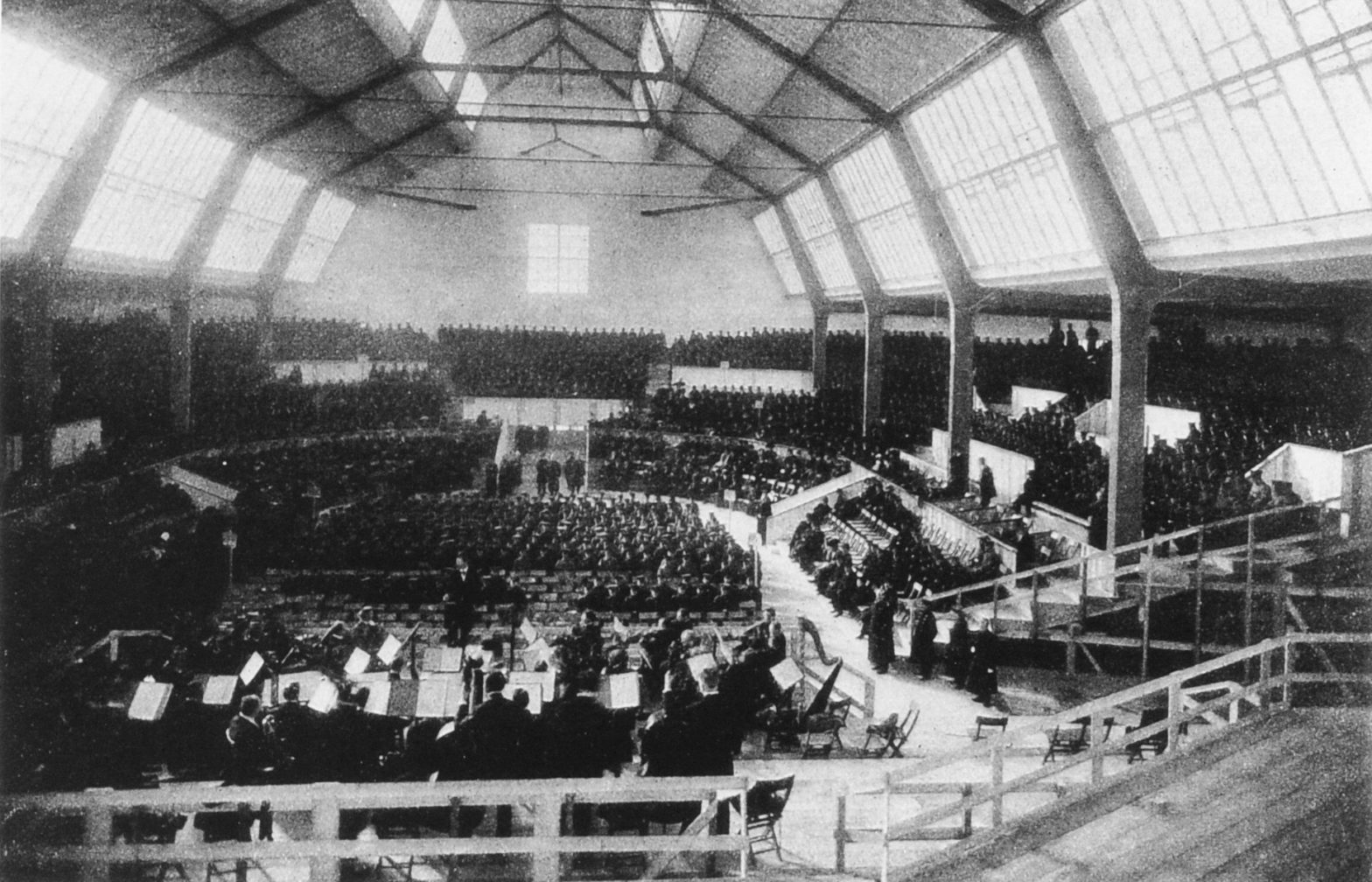Impressionism
First performed in 1894, Prelude to the Afternoon of a Faun by Claude Debussy is an example of Impressionism. Like the Rite of Spring it too is a ballet and introduced a new freedom in form and harmonic color. The prelude is a setting of a Stéphane Mallarmé poem and attempts to inhabit its mood and imaginative imagery. Mallarmé's works anticipated later movements in art such as Dadaism, Surrealism, and Futurism.
Around 1908 within the scope of a few works Arnold Schoenberg [Schönberg] set in motion what was termed the "emancipation of the dissonance" One such work was Du Lehnest Wider Eine Silberweide or You lean against a silver willow from the song cycle Das Buch der hängenden Gärten. This natural extension of the romantic eras chromaticism opened the flood gates in the early days of the 20th century for more and more bold use of dissonance and pantonalism.
Listen to the itunes stream: Du lehnest wider eine Silberweide...« (1908)
Maurice Ravel dedicated Soupir "Sigh" to Stravinsky his musical setting of the first of three poems by Stéphane Mallarmé (1842-1898) The work premiered in 1913. Incidentally Debussy set the same three poems to music that same year.
Trois Poèmes de Stéphane Mallarmé by Maurice Ravel (1913)
Soupir
Language: French
Mon âme vers ton front où rêve, ô calme soeur,
Un automne jonché de taches de rousseur,
Et vers le ciel errant de ton oeil angélique,
Monte, comme dans un jardin mélancolique,
Fidèle, un blanc jet d'eau soupire vers l'azur!
Vers l'azur attendri d'octobre pâle et pur
Qui mire aux grands bassins sa langueur infinie
Et laisse, sur l'eau morte où la fauve agonie
Des feuilles erre au vent et creuse un froid sillon,
Se trainer le soleil jaune d'un long rayon.
Sigh
Language: English
My soul rises towards your brow o calm sister, where there lies dreaming
An autumn strewn with russet freckles,
And towards the restless sky of your angelic eye,
As in a melancholy garden,
A white fountain faithfully sighs towards the Azure!
Towards the compassionate azure of pale and pure October,
Which mirrors its infinite languor in the great pools
And, on the stagnant water where the tawny agony
Of the leaves stirs in the wind and digs a cold furrow,
Lets the yellow sun drag itself out in a long ray.
The Symphony No. 8 in E-flat major by Gustav Mahler, known as the Symphony of a Thousand premiered in Munich on 12 September 1910. The work required a chorus of about 850, with an orchestra of 171

Mahler's 8th was based "Faust" the tragic play by Johann Wolfgang von Goethe. Musically it represents the vast ambition of composers of the day as well as the climate of challenging progressive thought that influenced artists, composers, writers, and the upper and middle classes of Europe and America. Listen below to the finally of this titanic work
In conclusion it is fair to say that at the time of the premiere of Stravinsky's "Rite of Spring" in 1913 innovation, progressive ideas, dissonance, and rhythmic variety were par for the course. It is hard to say that the "Rite" was a real stand out other than the fact that it synthesized all of the most progressive elements of the current music into one raucous barrage of thunderous chords and rhythms. These rhythms and harmonies were echoed across the ocean in blues and jazz.
Bibliography
Peter Franklin. "Mahler, Gustav." Grove Music Online. Oxford Music Online. 8 Jun. 2009
Wilson, Charles. "Twentieth Century, The." The Oxford Companion to Music. Ed. Alison Latham. Oxford Music Online. 6 Jun. 2009
"Arnold Schoenberg - Werkverzeichnis - 1882-1907." Arnold Schoenberg Center. 06 June 2009
"Prelude to the Afternoon of a Faun -." Wikipedia, the free encyclopedia. 08 June 2009
"Stéphane Mallarmé -." Wikipedia, the free encyclopedia. 08 June 2009

No comments:
Post a Comment